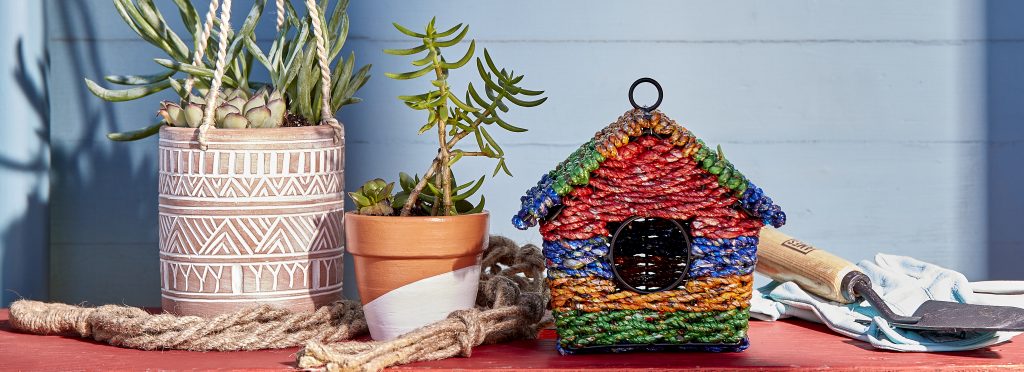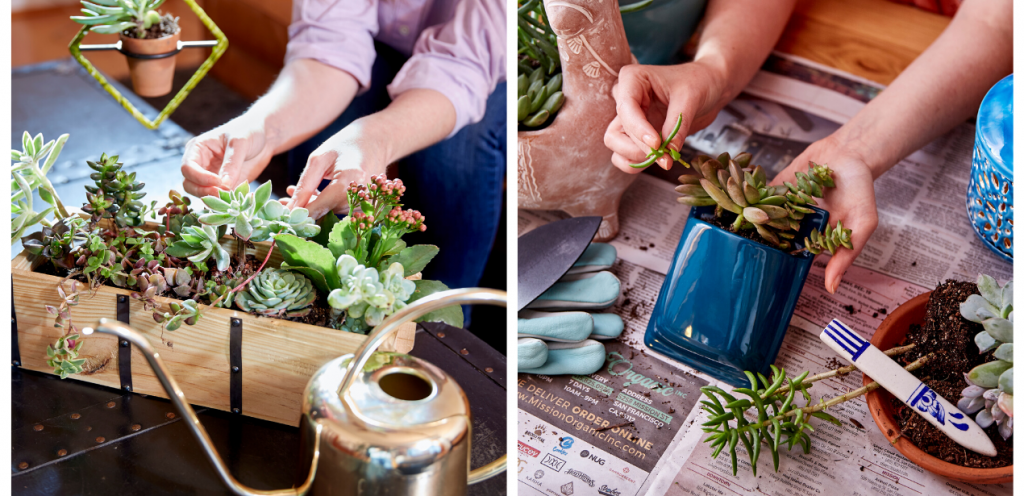
When asked if I would write an article on how to care for plants, I laughed out loud. If the team at GlobeIn really knew who they were asking, most likely they would have asked someone else. I have a Christmas cactus that is alive only because my son remembers to water it. I have one aloe plant that does okay, and the rest of the plants I am basically not allowed to touch. When my husband purchased our coffee tree that has to remain indoors because of temperature needs, he answered my one raised eyebrow with, “Don’t worry, I will take care of it. You don’t touch it.”
However, I am proud to say that I do know how to take care of succulents and some herbs. Which is good news for you because that means if these plants can thrive with my black thumb, they are forgiving, and you too can have a black-turned-green thumb. This article will give you tips on succulents and herbs, ensuring that when your themed boxes arrive at your doors you will be fully prepared on how not to kill all your lovely plants.

Succulents:
Succulents are one of the most forgiving of all plants, and low maintenance as well. The main rule for succulents is to give them sunshine. If you have a particularly sunny window that gets good light throughout most of the day, put your succulents on the sill or close by.
The right soil is also important. If your local greenhouse has soil made for cacti, use that. If not, look for one that has good drainage. In the summer time you will want to fertilize them and water them more frequently. Don’t overwater, just make sure the soil stays moist. In the wintertime, succulents do not grow as fast and sort of hibernate, which means you do not need to fertilize them. You can also cut back how often you water them.

Succulents are a type of plant that keeps on giving. If you decide you want more of what you have, you can easily propagate the leaves to make more. First, break off or cut off a leaf or leaves. Let them dry out for a few days, or until the cut part has hardened. Then get a new pot with cactus soil and lay the leaves on top. Water sparingly and soon you will see tiny roots appear. After the roots appear, baby plants will appear. At this point let the soil become dry and place the baby plants in individual pots or pot them together in a larger pot. The original leaf/leaves will wither and fall off, but you will have new baby succulents!

Herbs:
I love fresh herbs. Instead of buying them pre-packaged constantly, my family has been buying the whole plant and trying to maintain them. We currently have basil that is doing really well, even in the midst of the cold winter. We are looking forward to adding mint, cilantro, and rosemary to the window sill too. If you are looking to grow herbs indoors, here are a few tips to get you started.
If you buy a plant and not the seeds, once you get it home take off any dead leaves to help the herbs grow faster. If you are starting with a seed or growing more than one plant, ensure that each plant gets its own pot. Like succulents, herbs like a lot of sunshine but they require a denser potting mix that is rich in nutrients. They also need to be watered regularly.
If you ordered one of the garden themed boxes from GlobeIn this month, you have a head start with a ceramic pot. Herbs do well with clay or ceramic, and need to have good drainage.
For fertilizing herbs, the more natural the better. If you compost, you can use that, or manure or even really ripe (aka rotting) bits of fruit or vegetables to feed your herbs. When I clip dead leaves off, I leave them to decompose on the soil and feed back into the plant.

Herbs are a little more temperamental when it comes to staying warm, so make sure they are not in temperatures cooler than 60 F. Keeping them in a hot windowsill in the summer can also make them wither, so be sure to give them breaks from sun after about 6 hours in the direct light. You also have to watch that some herbs, like to basil, do not “go to seed” unless you are trying to harvest more seeds. This means they will begin to sprout flowers. When this happens with basil your leaves will be smaller and the plant becomes woodier. If it does go to seed, you can clip off the bloomed flower and hang it upside down to dry. Then roll it back and forth on a plate or cutting board and harvest the black round seeds to plant.
With these few simple tricks, you will be a pro at indoor gardening in no time. Gardening, even indoors, can be an enjoyable experience and it is rewarding to see the fruit of your labor, even if your labor was easy. 😉 Leave us a comment below and let us know which plants you are growing in your home and what other questions you may have about succulents or herbs.

Written by Laura Beiler, GlobeIn Maven
Residing in Virginia with her husband and four children, Laura enjoys writing and is an avid reader, as well as one who tries to raise as much awareness as possible about ethical brands and causes, while building community with those who are of the same mind. She thoroughly believes deep conversations happen around a dining room.
in Virginia with her husband and four children, Laura enjoys writing and is an avid reader, as well as one who tries to raise as much awareness as possible about ethical brands and causes, while building community with those who are of the same mind. She thoroughly believes deep conversations happen around a dining room.
